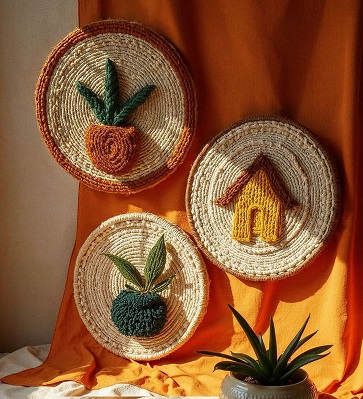SIGN UP FOR NEWSLETTER
Be the First to Know. Sign up to newsletter today

Coir, or coconut fibre, is produced from coconut husk. This golden fiber comes in handy in making a products of daily use. These include handloom floor mats, doormats, carpets, rope cots, brushes and mattresses. In addition, horticulture, upholstery padding and sacking are also made. White coir (reaped from unripe coconuts) on the other hand, is utilized for making finer brushes, fishing nets, strings and ropes.
Available at Delhi:– Kairali, Dilli Haat
For instance , it is said that coconut was introduced in India between 1400 B.C to 600 B.C. (post-Vedic period). In other words, the earliest recorded history goes back to the Ramayana period. For example, one may find references of coconut in the Kishkindha Kanda and Aranya Kanda in the Ramayana. The popular ancient Indian epic was written by Valmiki around 3rd century BC.
India is actively engaged in the export of coir and coir products to around 72 countries around the world. This natural fibre has its roots in the State of Kerala, which is named after ‘Kera’ or Coconut tree and ‘Alam’ or land thus, suggestive of ‘the land of coconut trees’. In this coastal region, everything from dishes to drinks to oils revolves around coconut.
Kerala alone contributes to more than 60 percent of India’s total coconut production. On top of that, the South Indian State accounts for 85 percent of total coir products thus providing employment opportunities to lakhs of people. For instance, in the city of Alappuzha in Kerala, it’s not unusual to see thousands of women carrying heaps of coconut husk every day to turn them into useful threads.
Odisha, Goa and Andhra Pradesh are also now involved in the production of coir products.
Be the First to Know. Sign up to newsletter today
57 views